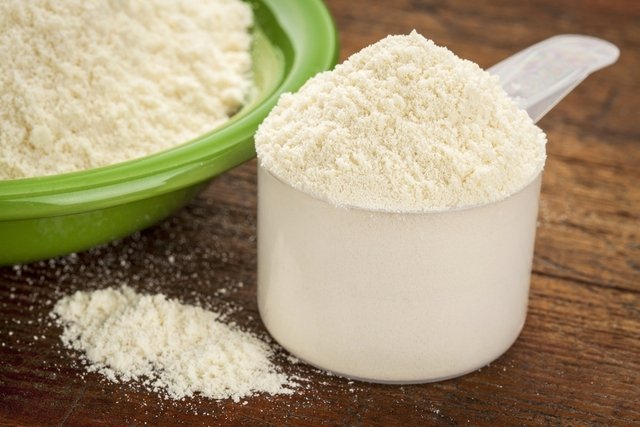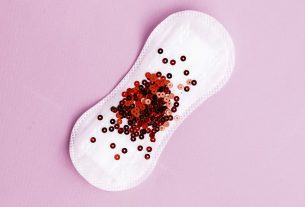Maltodextrin is a type of carbohydrate that is quickly absorbed by the body, and is generally indicated to improve physical performance and promote muscle mass gain in those who practice high-resistance activities, such as football or running, or strength training, such as bodybuilding. and calisthenics, for example.
Additionally, maltodextrin is also used by industry to sweeten and thicken foods and beverages, such as infant formula, diet products, ice cream, butter, sauces, and beer.
Maltodextrin is sold in food supplement stores or pharmacies, in the form of a gel or powder, and can be consumed alone or together with other supplements, such as creatine and whey protein, as a pre-workout, during or after exercise.

What is it for
The main indications for maltodextrin are:
1. Improve physical performance
With ergogenic properties, maltodextrin improves physical performance, as it provides the body with quick and long-lasting energy. Therefore, maltodextrin is a good dietary supplement option to be used before or during long-term activities, such as football, triathlon, marathon, rowing, cycling and running.
Furthermore, in cases of more than one competition on the same day, maltodextrin can also be used after physical activities to help quickly replace muscle glycogen, promoting muscle recovery.
2. Promote muscle mass gain
As it is a carbohydrate, a nutrient that improves performance during training in addition to providing energy for the formation of muscle mass, maltodextrin is a supplement that promotes muscle mass gain. Check out other supplements recommended for gaining muscle mass.
In addition, muscle cells also store glucose in the form of glycogen to be used as a source of energy during exercise and to help with muscle recovery after training.
3. Help with recovery after surgery
Maltodextrin can be recommended by a doctor or nutritionist to help with recovery after surgery, because it provides energy, in addition to helping to reduce inflammation and the length of hospital stay.
Thus, maltodextrin is used in a hospital environment, through enteral or parenteral nutrition, a method of administering nutrients directly into the vein, for people who cannot obtain nutrients through oral intake. Learn more about parenteral nutrition.
4. Treat dehydration
In a hospital environment, maltodextrin can be used in oral solutions, being indicated to help treat dehydration, especially when caused by diarrhea.
How to drink
Maltodextrin can be taken before, during or after training, depending on each person’s goals. The amount of maltodextrin generally indicated is 10 to 30 grams, which must be diluted in 200 to 300 ml of water or another drink. After ingestion, maltodextrin begins to act in the body within around 20 minutes.
However, the use of maltodextrin should preferably be done with the guidance of a doctor or nutritionist, so that the amount can be adjusted according to individual energy expenditure.
Furthermore, maltodextrin can also be consumed in combination with other carbohydrates, such as fructose and glucose or together with other supplements, such as creatine or whey protein, to help gain muscle mass. Find out more about the supplements recommended for increasing muscle mass.
In the form of oral solutions, enteral or parenteral nutrition, maltodextrin should only be used as directed by a doctor or nutritionist.
Does maltodextrin make you fat?
As it is a carbohydrate with a high glycemic index, maltodextrin can make you gain weight, especially if it is consumed in a diet rich in calories, associated with physical inactivity.
Is maltodextrin bad?
To date, there are no studies that indicate that maltodextrin is harmful to health or causes problems with the kidneys, liver or heart.
Difference Between Dextrose and Maltodextrin
Dextrose is a simple carbohydrate that is quickly converted into glucose and absorbed by the body, and is recommended to improve the recovery of those who practice intense exercise, such as weight lifting and high-intensity interval training (HIIT). Learn more about dextrose.
Maltodextrin is a complex carbohydrate formed by dextrose, maltose and fructose, which gradually provides energy to the body. Therefore, maltodextrin is widely used by endurance athletes, such as football players, runners or cyclists, as it delays the onset of fatigue during exercise.
Possible side effects
Consumption of maltodextrin does not normally cause side effects. However, unguided and excessive use of maltodextrin can promote weight gain and the emergence of insulin resistance and diabetes.
Who shouldn’t take
Pregnant or breastfeeding women, the elderly, children, as well as people with diabetes, obesity or other health problems, should always consult a doctor or nutritionist before using maltodextrin.




